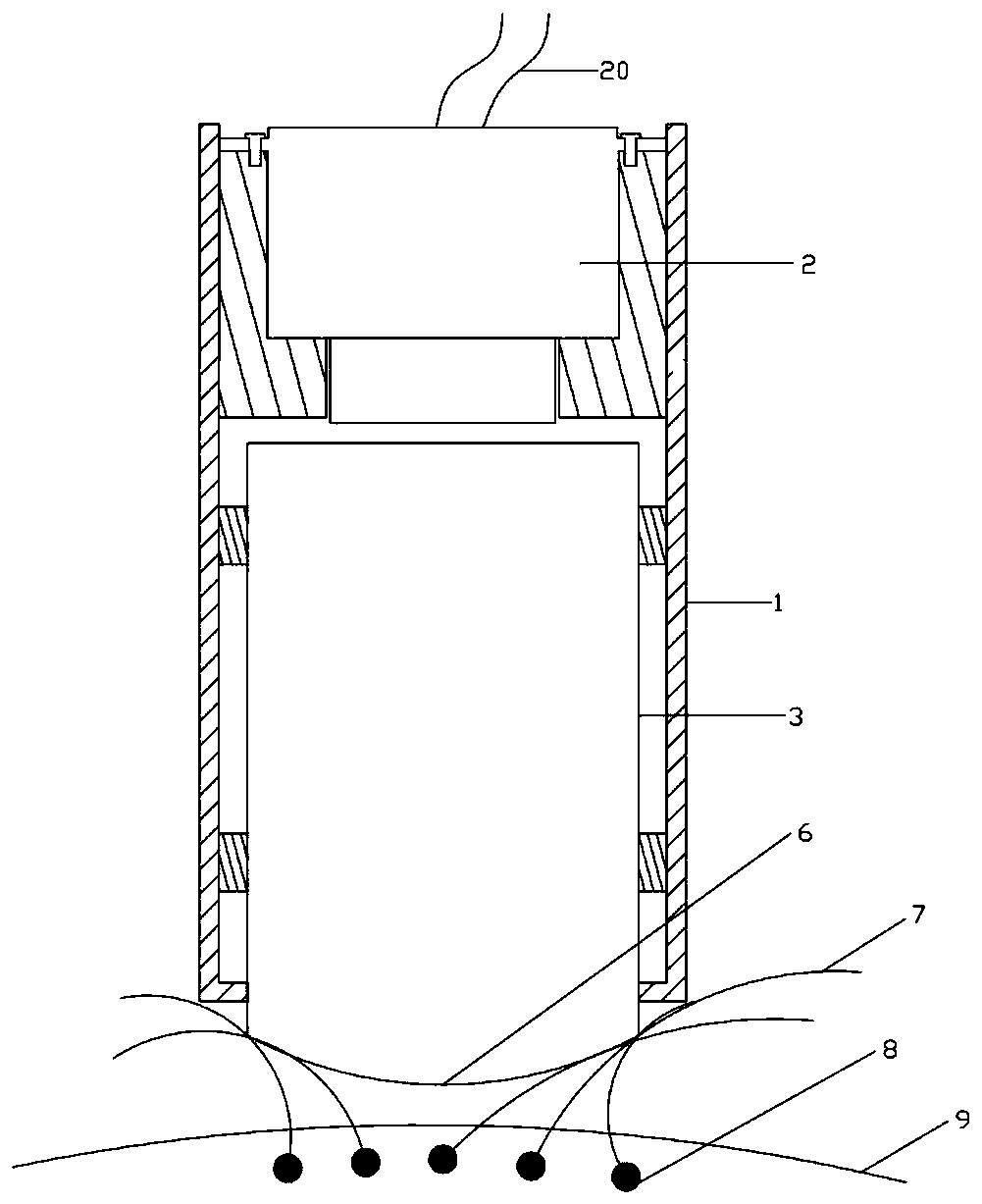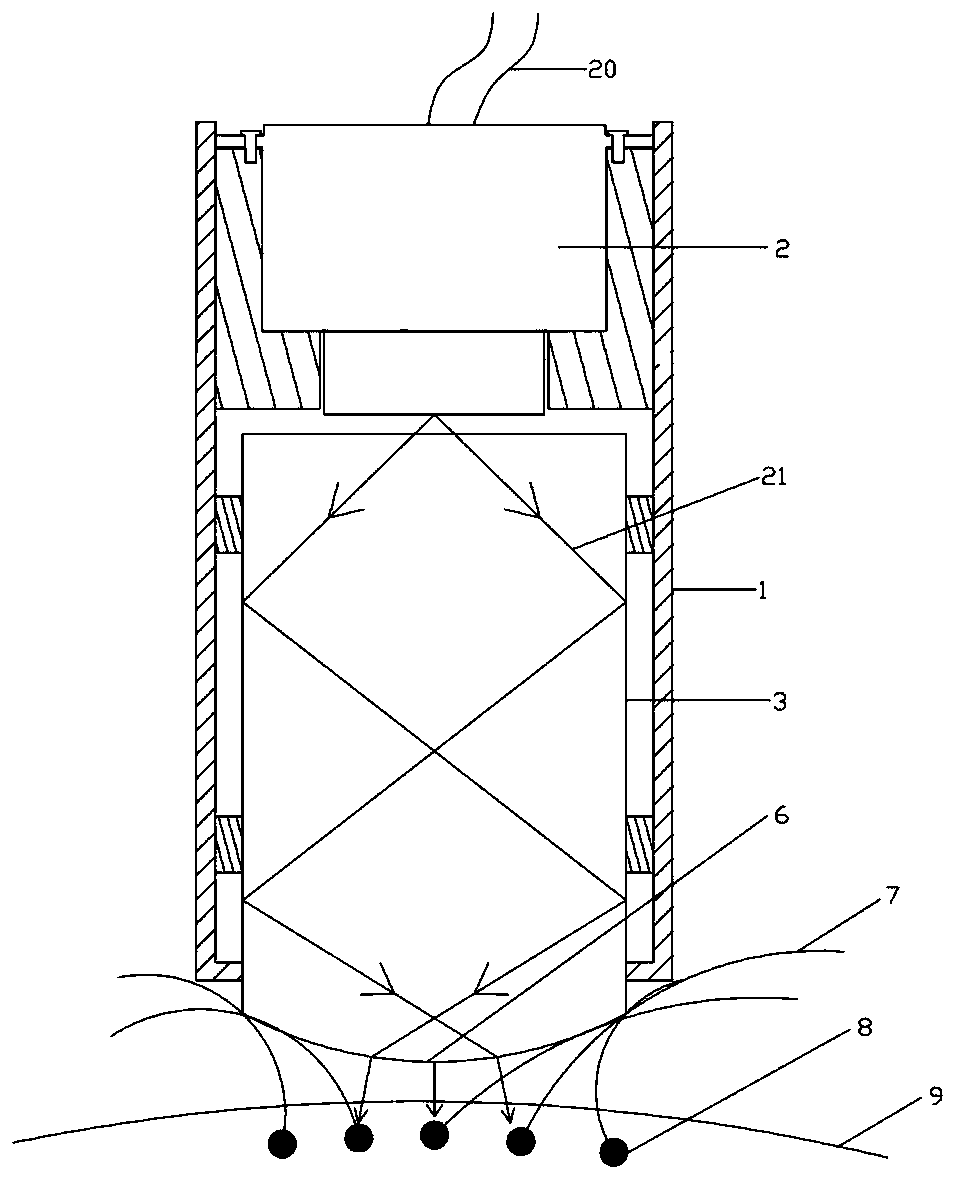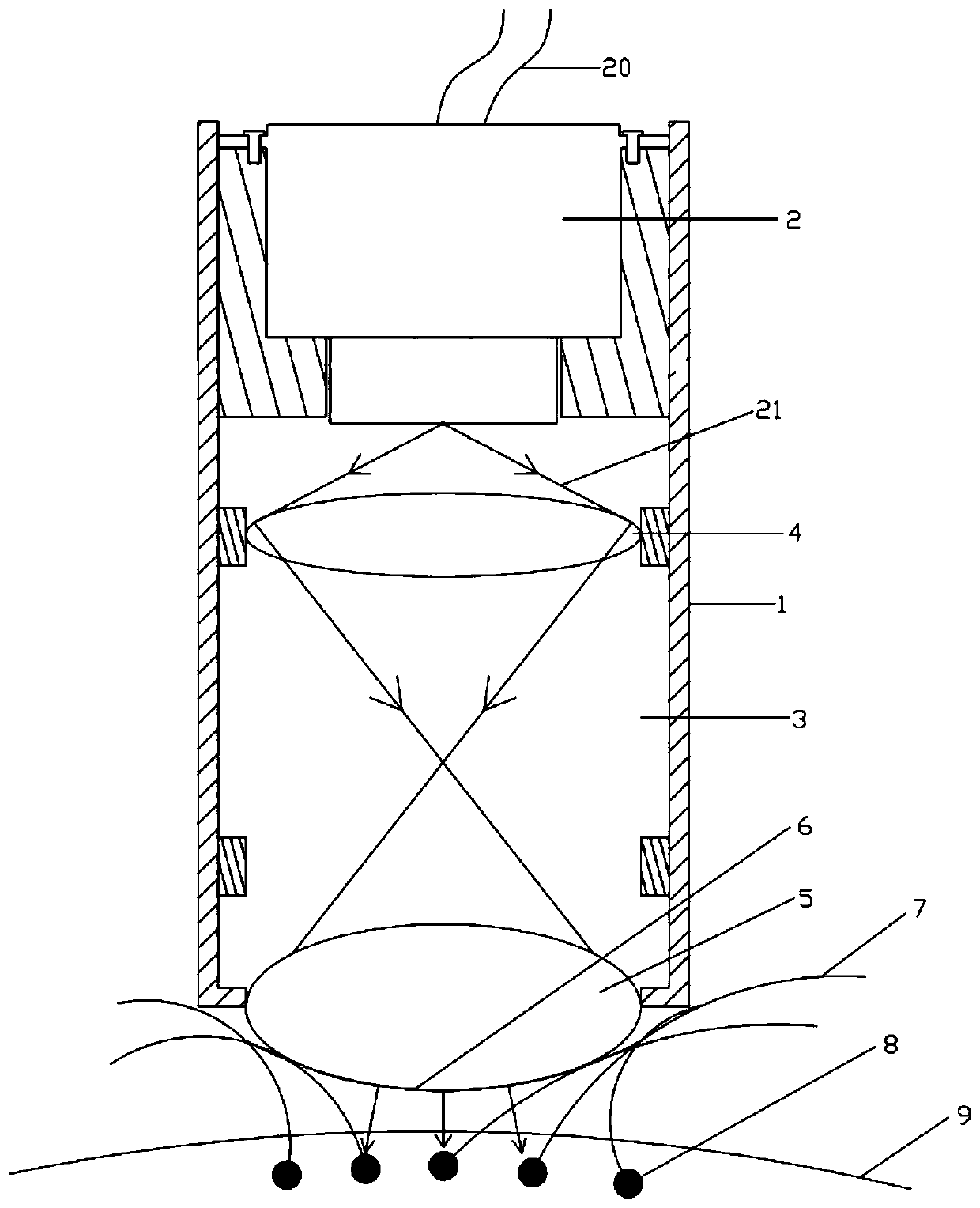Light source coupled irradiation device for hair growth
An irradiation device and light source technology, which is applied in the field of weak laser applications, can solve the problems of poor uniformity of irradiation, uneven laser energy, and low laser utilization efficiency, and achieve the effect of convenient and precise fine-tuning and improvement of utilization efficiency
- Summary
- Abstract
- Description
- Claims
- Application Information
AI Technical Summary
Problems solved by technology
Method used
Image
Examples
Embodiment 1
[0050] refer to figure 1 and 2 , in this embodiment, the spot shaping element is a light guide mirror 3 fixed in the sleeve 1 , and the lower end of the light guide mirror 3 forms an arc-shaped exit end surface 6 . Light guide mirror 3,4 material can be glass or plastics.
[0051] The upper and lower ends of the light guide mirror 3 are coated with an anti-reflection film that is highly transparent to the output wavelength of the light source 2 to increase the transmittance of the emission wavelength, and its cross section can be designed as a rectangle or a circle according to the divergence angle of the light source 2 . This scheme utilizes the principle of total reflection. Through theoretical calculations, adjusting the parameters of the light guide mirror 3 and the distance between the light guide mirror 3 and the light source 2 can make the emitted light 21 undergo multiple total reflections on the side wall of the light guide mirror 3 , and finally in the arc shape o...
Embodiment 2
[0053] refer to image 3 , in this embodiment, the spot shaping element includes several lenses arranged sequentially along the exit optical path of the light source 2 , and the lower surface of the lens at the end of the optical path forms an arc-shaped exit end surface 6 . The upper and lower optical surfaces of the lens are coated with an anti-reflection film with high transmittance to the output wavelength of the light source 2 to increase the transmittance of the emission wavelength. The lens material can be glass or plastic.
[0054] Further, the lens includes a first lens 4 and a second lens 5 sequentially arranged along the outgoing light path of the light source 2 . According to the divergence angle of the light source 2, the first lens 4 can be an aspherical lens or a spherical lens, so as to facilitate the homogenization of the light spot. This solution utilizes the principle of transmission. Through theoretical calculation, the distance between the first lens 4 a...
Embodiment 3
[0056] refer to Figure 4-11 , in this embodiment, the casing 1 is further optimized. A light source installation sleeve 10 is fixedly connected to the inner wall of the sleeve 1 , and a light source adjustment sleeve 11 is arranged in the light source installation sleeve 10 to move up and down along the axial direction of the sleeve 1 , and the light source 2 is fixedly connected in the light source adjustment sleeve 11 . The up and down position of the light source 2 can be finely adjusted through the light source adjustment sleeve 11, so as to facilitate the adjustment of the light path. When designing this device, it is necessary to pre-design the distance between the light output end of the light source 2 and the spot shaping element below (the upper surface of the light guide mirror 3 or the upper surface of the first lens 4), but due to processing or installation errors, After installation, there may be errors in a small range. At this time, through the light source ad...
PUM
| Property | Measurement | Unit |
|---|---|---|
| Wavelength | aaaaa | aaaaa |
Abstract
Description
Claims
Application Information
 Login to View More
Login to View More - R&D
- Intellectual Property
- Life Sciences
- Materials
- Tech Scout
- Unparalleled Data Quality
- Higher Quality Content
- 60% Fewer Hallucinations
Browse by: Latest US Patents, China's latest patents, Technical Efficacy Thesaurus, Application Domain, Technology Topic, Popular Technical Reports.
© 2025 PatSnap. All rights reserved.Legal|Privacy policy|Modern Slavery Act Transparency Statement|Sitemap|About US| Contact US: help@patsnap.com



